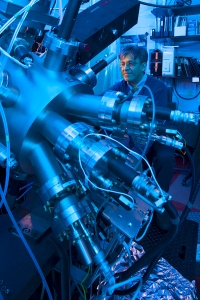 For as long as I owned a computer, I have always felt that it was sluggish and slow to respond. It wasn’t so much about the lack of raw computing power nor the bottleneck of memory/hard drive’s speed, though these were certainly factors involved; rather, it was more of a disconnection between the immense possibilities it could offer and the realization that only a tiny fraction of its potential was utilized, that decades might past before its true potential is fully realized. This feeling of sluggishness has persisted over the years, and no matter how fast the computers have become, no matter how sophisticated it came to be, the feeling was never really dispelled. It was like giving all you have to become a better person, yet years past and you are still nowhere near your ideal self.
For as long as I owned a computer, I have always felt that it was sluggish and slow to respond. It wasn’t so much about the lack of raw computing power nor the bottleneck of memory/hard drive’s speed, though these were certainly factors involved; rather, it was more of a disconnection between the immense possibilities it could offer and the realization that only a tiny fraction of its potential was utilized, that decades might past before its true potential is fully realized. This feeling of sluggishness has persisted over the years, and no matter how fast the computers have become, no matter how sophisticated it came to be, the feeling was never really dispelled. It was like giving all you have to become a better person, yet years past and you are still nowhere near your ideal self.
Now, I’m not disappointed with the current progress of computing advancement. Despite the various challenges looming on the horizon, I’m optimistic that these can and will be overcome, even if it means the end of Moore’s Law. Just look at where we stand now: Intel is still on a roll despite a delay in the production of 14nm wafers, and is confident in rolling out the 10nm wafers as early as 2015 (though 2016 is more probable) and 450mm wafers before the end of this decade; memristor such as ReRAM has seen its working prototype implemented within the current metal-oxide-semiconductor (CMOS) manufacturing process, and STT-MRAM isn’t far behind; the 1TB solid-state drive (SSD) can now be purchased for around $500, edging ever closer to the price-performance sweet spot of flash SSDs. All indications point to us living in one of the fastest growing period in terms of technological advancement, one that might not be seen again for centuries to come, and one that is, in all likelihood, in its last decade.